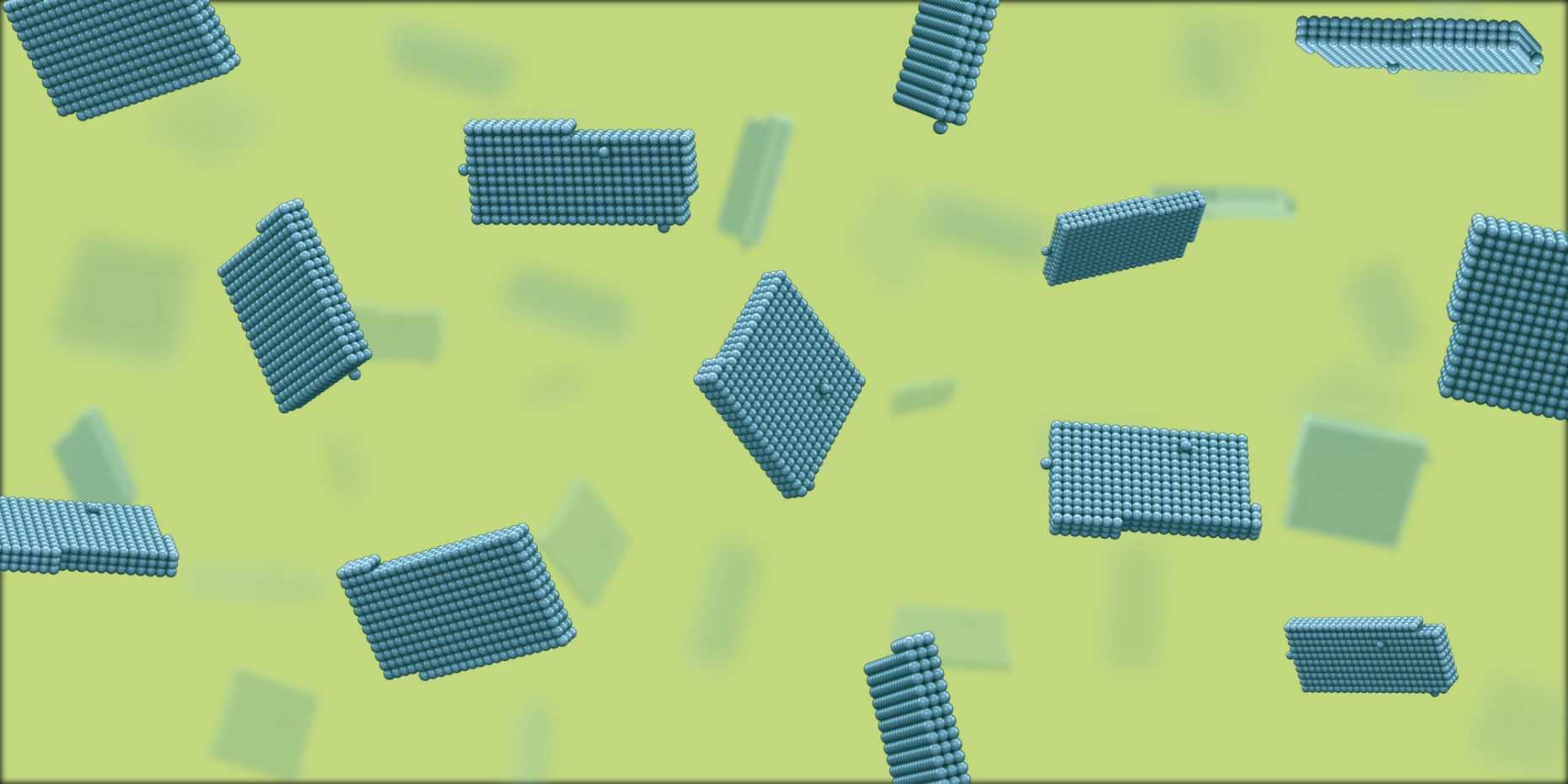Semiconductor Nanocrystals

Nanometer-scale particles known as nanocrystals allow the optical properties of a semiconductor to be tailored. For example, by changing the particle size, the color of the material can be tuned. Consequently, the most commonly studied nanocrystals—spherical particles known as colloidal quantum dots—are now commercially used as red and green fluorescent materials in flat-panel displays.
Despite decades of research, state-of-the-art quantum-dot samples still exhibit a distribution in particle size. This limits their color purity, affecting performance in applications. In 2008, a new type of semiconductor nanocrystal with a thin rectangular shape, known as nanoplatelets, was reported by Ithurria and Dubertret1 (see cartoon above). Amazingly, nanoplatelet samples can be chemically prepared in which all particles have the exact same atomic-scale thickness (e.g. 3 atomic monolayers). This leads to dramatically improved optical properties. Recently, researchers in OMEL have introduced a quantitative model that explains nanoplatelet formation.2 It immediately resolved many puzzles observed in experiments. More importantly, it can now be applied to prepare a larger range of nanoplatelet materials. We are pursuing this goal while also investigating their connection to a related nanocrystal, known as “magic-sized” clusters (MSCs). MSCs have a long history in colloidal nanomaterials. They are commonly believed to be molecular-scale arrangements (i.e. clusters) of semiconductor atoms with a specific (i.e. “magic”) structure that exhibits enhanced thermodynamic stability. Consequently, a MSC sample could in principle contain particles that are all exactly the same size and shape. We are exploring this topic by developing new MSC materials and modelling their growth.
- Ithurria & Dubertret. Quasi 2D Colloidal CdSe Platelets with Thicknesses Controlled at the Atomic Level. Journal of the American Chemical Society 130, 16504 (2008). (external page Link)
- Riedinger, Ott, Mule, Mazzotti, Knüsel, Kress, Prins, Erwin, & Norris. An Intrinsic Growth Instability in Isotropic Materials Leads to Quasi-Two-Dimensional Nanoplatelets. Nature Materials 16, 743 (2017). (external page Link)